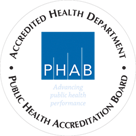
Stages to look for in your child's hearing development.
Birth to 3 months
- Quiets when sound approaches or when parents' voices are heard.
- Reacts to loud sounds by blinking, moving or crying.
3 to 6 months
- Looks to speaker's voice.
- Turns head to the source of a voice.
- Enjoys rattles and noise-making toys.
6 to 10 months
- Reacts to music by cooing.
- Responds to own name.
- Looks to the correct person when words like "Mommy" or "Daddy" are said.
- Shows understanding of common words ("no", "bye", etc.).
- Babbles with sounds like "ba", "da", "ma".
10 to 15 months
- Knows names of favorite toys and can point to them when asked.
- Likes rhymes and jingles.
- Imitates simple words and sounds.
15 to 20 months
- Can follow simple directions ("Go get your shoes").
- Asks for things by name ("blanket", "cookie", "teddy bear").
- Imitates simple words and sounds.
- Speaks with a vocabulary of 10 to 20 words.
20 to 24 months
- Begins combining words such as "More juice", "Mommy home?", or "Go bye-bye car".
- Refers to self by name.
- Enjoys being read to.
- Shows interest in the sounds of radio, television and stereo.
24 months to 3 years
- At 24 months: speaks with a vocabulary of about 270 words, increasing each day.
- Wants to communicate to express needs and interests and tell experiences.
- Is frustrated when adults don't understand.
- By age three, has a vocabulary around 1000 words, 80% of which should be intelligible to strangers. Some sounds will be mispronounced ("th", "r", "l").


